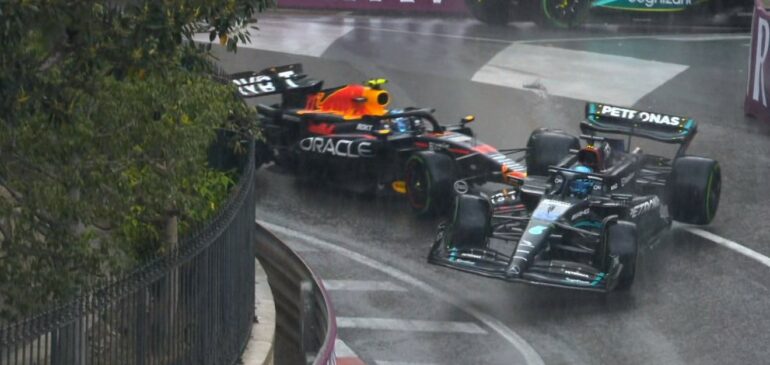Martin Brundle, a former Formula 1 driver with 158 races under his belt, has attributed poor visibility to George Russell’s dangerous rejoining of the track, which resulted in a collision with Sergio Perez during the Monaco Grand Prix. After going off at the Mirabeau corner, Russell reentered the wet track directly in the path of the oncoming Perez, leaving the Mexican driver with no time to react.
Although the collision resulted in minimal damage to both cars, Russell was penalized with a five-second penalty and two penalty points for what the stewards deemed an unsafe rejoin. However, Brundle came to Russell’s defense, stating that there was little else the Mercedes driver could have done in that situation apart from accelerating and hoping for the best.
Brundle mentioned in his Sky Sports column that he didn’t immediately notice the incident during commentary but acknowledged that Mercedes made timely calls for both Russell and Lewis Hamilton. He explained that if Russell hadn’t locked up and entered the Mirabeau escape road, he could have potentially secured third place ahead of Esteban Ocon. However, the subsequent penalty for the unsafe rejoin and the collision with the lapped Perez dashed those hopes.
Brundle highlighted the limited visibility and constraints of the drivers’ cockpits, where they can’t see out of the sides due to the raised structure and have limited head movement due to the HANS safety device. He also emphasized that mirrors are not effective when the car is not on the racing line, making it even more challenging for drivers to assess their surroundings during such situations.
Russell himself expressed disappointment and frustration, acknowledging that one small mistake cost him a podium finish. In an interview with F1 TV, he admitted to kicking himself for the error, believing that without it, a podium finish would have been guaranteed after his pit stop.
The incident serves as a reminder of the challenges faced by drivers in situations where visibility is compromised, particularly during wet conditions. It also raises discussions about potential improvements or safety measures to enhance drivers’ visibility in critical moments, ensuring safer reentries onto the track.

